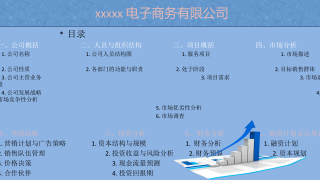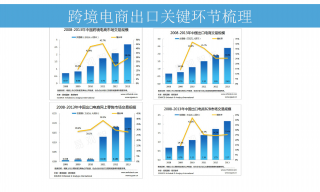车载FlexRay网络在线控转向系统中的应用和可靠性
VIP免费
摘 要
汽车电气化越来越高的今天,汽车 OEM 在汽车中使用了大量的 ECU 节点,
在增加汽车性能的同时,也为汽车系统整体的可靠性带来了挑战。汽车线控技术
是电气化控制中的研究方向之一,近年国内外研究随着 FlexRay 车载网络兴起而
逐年递增。然而更多的研究集中在 FlexRay 协议的应用和实时性的讨论,而线控
系统的可靠性却被忽视。
本论文结合汽车 ECU 可靠性测试的基本思想,对国内外车载 FlexRay 网络线
控转向系统的研究现状和汽车网络协议整体市场进行了概述。根据汽车工业中总
线的 OSI 分层关系,介绍了 FlexRay 总线规范的四层特性。结合 FMEA 和FTA
的风险评估方法对线控转向系统层面的五种失效现象进行分析后,设计出了网络
化的 FlexRay 线控转向系统。针对系统内部的沉默故障和永久故障建立评估系统
可靠性的马尔可夫模型,对两者的重要影响因素进行了仿真实验分析,为此对线
控平台进行冗余设计和测试,使得线控转向系统的平均故障前时间达到
9
10 /小时
的级别。
根据线控转向实时性和汽车产品的特征,论文选用带有 FlexRay 通信控制器
的MC9S12XF512 和NXP 的总线收发器 TJA1080,设计出了分布式网络化的线
控节点布局方案。由于线控转向方向盘和转向轮之间无机械链接,因此传动比可
任意配置,根据研究现状对低速阶段的理想传动比进行了修正,测试得到更符合
实际的效果。
论文最后建立了 FlexRay 总线的容错实时线控转向模型,每个节点由两个相
同特性的最小静态单元 SRU 组成的容错单元 FTU 组成。对系统的可靠性评估用
平均故障前时间 MTTF 指标,对沉默故障和永久故障这两类影响线控转向系统可
靠性的随机问题建立了马尔可夫分析模型。测试得到影响沉默故障的最大因素是
FTU 中两个 SRU 之间切换的实时性,而影响永久性故障的最大因素是 SRU 中的
沉默故障个数。当模型中加入冷备份 SRU 时,测试到系统 MTTF 达到
9
10 /小时
的
要求。
结合 FlexRay 线控转向系统节点的重要度,采用双通道的 FlexRay 通信网络,
并为转角转矩传感器设计了备份冗余节点,测试表明当线控转向系统在节点出现
故障时,冗余节点能够及时替换故障节点,有效地保证了线控转向系统的可靠性。
关键词:Steer-by-Wire FlexRay 马尔可夫模型 分布式容错单元
可靠性
ABSTRACT
With vehicle electrification increasingly higher today, ECU nodes are used a lot
in the car, increase vehicle performance also brought the issue of vehicle overall
reliability of the system. The study of X-by-wire technology is one of the researches.
Both at home and abroad research have increased as the FlexRay automotive network
in recent years. However, more research has focused on the application of the FlexRay
protocol and real-time discussion. X-by-wire system reliability has been ignored.
This paper combines the ECU reliability testing of the basic ideas, for FlexRay
network steer-by-wire system present status and vehicle network protocol the overall
market is summarized. According to the OSI layer bus introduced the four
characteristics of the FlexRay bus specification. FMEA and FTA with the risk
assessment method on five kinds of steer-by-wire system level failure analysis, then
designed a FlexRay network steer-by-wire system. The system of internal silence and
permanent faults of establishing evaluation system reliability prediction model,
simulation experiment on two important factors analysis and redundancy design and
testing , steer-by-wire system of levels of
9
10 / h
mean time before failure.
According to features of real-time and steer-by-wire vehicles, paper selection
with the FlexRay communication controller MC9S12XF512 and NXP's TJA1080 bus
transceivers, designed a distributed network control node scheme.Because the steering
wheel and the steering wheel without mechanical link between, so the transmission
ratio can be configured, according to the current research status on the low-speed stage
of ideal transmission ratio is corrected, testing is more consistent with the actual effect.
Finally, established a fault-tolerant steer-by-wire , with FlexRay bus model in real
time. Each node consists of two SRU minimum static units consisting of the same
characteristics of fault-tolerant cells composed of FTU. On system reliability
assessment of mean time before failure MTTF indicators, silent failure and permanent
failure influence both types of wire steering system reliability of stochastic problems
created Markov analysis model, tests effects of silent failures Max factor are two FTU
SRU switching between real-time, and factors affecting the Permanent failure of the
largest is silent failures in SRU number.When the model added cold backup SRU,
MTTF meet the requirements of
9
10 / h
test system.
With FlexRay node important degree of steer-by-wire system, FlexRay com
munications network with dual-channel and angle torque sensor node backup re
dundancy, tests showed that when a steer-by-wire system when a node fails, re
dundant nodes in time replace the failed node, effectively ensure the reliability
of steer-by-wire system.
Key Words:Steer-by-Wire FlexRay Markov-model Distributed Fault
Tolerance Unit Reliability
目 录
中文摘要
ABSTRACT
第一章 绪论 ....................................................................................................................1
§1.1 汽车总线系统的标准化.......................................................................................1
§1.2 汽车 ECU 可靠性现状.........................................................................................4
§1.3 转向中的 FLEXRAY 网络应用现状 .....................................................................5
§1.3.1 线控转向技术的研究现状.............................................................................5
§1.3.2 可靠性高的 FlexRay 协议 ............................................................................7
§1.4 本文主要研究的内容...........................................................................................8
第二章 车载 FLEXRAY 线控转向系统理论基础 ........................................................9
§2.1 FLEXRAY 通信协议 ...............................................................................................9
§2.1.1 总线拓扑和物理层........................................................................................9
§2.1.2 总线数据链路层..........................................................................................11
§2.1.3 网络启动和时钟同步..................................................................................14
§2.1.4 FlexRay 总线错误处理和监视....................................................................16
§2.1.5 配置和协议状态..........................................................................................17
§2.2 汽车 STEER-BY-WIRE 系统架构 .........................................................................19
§2.2.1 汽车前轮线控转向系统架构.......................................................................19
§2.2.2 汽车前轮 SBW 系统工作原理....................................................................21
§2.3 线控转向变传动比与前轮转向操纵性.............................................................22
§2.3.1 二自由度汽车系统的动力学模型...............................................................22
§2.3.2 线控转向理想变传动比...............................................................................23
§2.3.3 理想传动比下汽车前轮转向.......................................................................25
§2.4 本章小结 .............................................................................................................26
第三章 FLEXRAY 线控转向风险评估 ........................................................................27
§3.1 分布式实时 SBW 系统......................................................................................27
§3.2 线控转向系统的风险评估 .................................................................................27
§3.2.1 SBW 通道故障的 FTA 分析 .......................................................................29
§3.2.2 FlexRay 总线 SBW 系统的 FMEA 分析 ....................................................30
§3.2.3 线控转向系统的 FTA 分析 ........................................................................33
§3.3 本章小结 .............................................................................................................38
第四章 实时容错的 FLEXRAY 总线 SBW 可靠性..................................................39
§4.1 分布式时间触发容错系统.................................................................................39
§4.2 可修性系统的马尔科夫理论.............................................................................41
§4.3 基于 FLEXRAY 触发的容错实时转向系统 .......................................................44
§4.3.1 FlexRay 总线的 SBW 可靠性假设 .............................................................44
§4.3.2 线控转向可靠性评估参数..........................................................................45
§4.4 FLEXRAY 线控转向马尔可夫可靠性模型.........................................................48
§4.4.1 无故障的简单模型.......................................................................................48
§4.4.2 沉默故障的可靠性.......................................................................................49
§4.4.3 永久性故障的可靠性...................................................................................51
§4.5 本章小结 .............................................................................................................52
第五章 SBW 系统可靠性模型评估与测试 .................................................................53
§5.1 系统可靠性模型评估 .........................................................................................53
§5.2 引入冷备份修缮的 FLEXRAY 总线的 SBW......................................................54
§5.3 本章小结 .............................................................................................................56
第六章 结论与展望.....................................................................................................56
§6.1 课题工作总结...................................................................................................57
§6.2 课题研究展望...................................................................................................57
参考文献.........................................................................................................................59
在读期间公开发表的论文和承担科研项目及取得成果.............................................63
致 谢.............................................................................................................................64
第一章 绪论
1
第一章 绪论
为了满足众多功能的需求,在过去的几十年里,不但每辆汽车中 ECU 数量
在增加,而且每个 ECU 所包含的功能数量也以稳定的速率在增加。可以看出将
来每辆汽车的功能数目会持续增长,许多新的功能只有通过汽车和周围环境之间
的网络才能得以实现,且大量的 ECU 之间的协调需要架构分布的车载网络。随
着车载 ECU 个数的增加,潜伏在系统中故障失效的可能性也就越大,由此引起
的财产损失和人身伤害的概率也增加。因此对 ECU 网络的可靠性的要求更高[1]。
§1.1 汽车总线系统的标准化
随着电子技术在现代车辆中的成功应用,系统变得复杂化,出现的数据也增
多,导致今天新型车辆要使用多个互联的总线系统。为了控制这种复杂的互联网、
降低成本,全球性地汽车供应商以及法规制定者制定了规章,最终迫使车辆制造
商寻找对总线系统和对数据交换所采用的协议标准化方案。
为了在数据通信时,把不同的任务相互分开,采用如表 1.1[5]的ISO 标准充
当开放-系统-内部连接(OSI)-分层模型。表明车辆系统中不使用表示层、会话
层和网络层。
表1-1 针对总线系统和协议的 OSI-分层模型(官方 OSI-模型层不包含层 0)
层
任务
7
Application
应用层
对于用户来说总的可应用的服务
(如错误存储器的读取等)
6
Presentation
表示层
5
Session
会话层
4
Transport
数据传输层
多个报文数据的分组和重组
3
Network
网络层
常规程序、地址的分配、成员识别
和监视
2
Data Link
数据链路层
数据帧结构、总线数据访问、错误
安全、流量控制
1
Physical
物理层
电气信号电平、比特编码
0
Mechanical
机械层
插座连接和电缆
车载 FlexRay 在转向系统中的应用和可靠性
2
车载总线作为一种典型应用,其首要任务是使现有的优秀的通信系统瞄准汽
车概念、日益增长的功能。汽车总体通信结构的问题包括:不同系统匹配的冲突
妥协,总线各节点的同时抢占,按汽车级别的不同需求,以及高成本压力。在面
向当前需求的前提下,还得考虑今后的发展趋势。CAN 总线基于它应用的高度
宽泛性适合上述要求。LIN 总线在 1998 年引入后,地位也日渐突显,包括 2006
年首都引入的 FlexRay 系统,其将为下一代车载网络提供良好的通信架构。在接
下来的 10 年中 FlexRay 总线因其特性将逐渐使用在 ABS、EPS 等系统中,并逐
渐过度到刹车、悬挂等机械系统中,使其变为线控。
表1-2~表 1-5 是目前车辆总线标准的概况,有些总线系统将逐步被淘汰,
制造商公开宣称有些总线将不再进一步研发或者干脆取消(如 AUS 和
Byteflight)。对于一些总线系统如气囊控制网络将不再使用。
表1-2 底层基本总线(层 0~1)
总线类型
应用
欧洲标准
美国标准
基于字符(UART)
K/L
诊断
ISO9141
SAE J1708
诊断,在线 A级
SAE J1780 货车和
客车 9.6kbit/s
LIN
在线 A级
制造商联合组织
SAE J2602
基于字符 PMW
SAE J1850
诊断,
在线 A/B 级
SAE J1850(PMW
Ford,VPMW GM,
Chrysler) 10.4kbit/s 和
41.6kbit/s
基于-比特流
CAN
在线 B/C 级
ISO 11898 1-3, 5 Bosch
CAN2.0 A,B 47.6~
500kbit/s
ISO 11992 对于
牵引车和挂车的 CAN
ISO 11783 ISO
BUS 用于农业机械的
SAE
J2284(Passenger Cars)
500kbit/s
SAE J1939(货车和
客车)
250kbit/s
摘要:
展开>>
收起<<
摘要汽车电气化越来越高的今天,汽车OEM在汽车中使用了大量的ECU节点,在增加汽车性能的同时,也为汽车系统整体的可靠性带来了挑战。汽车线控技术是电气化控制中的研究方向之一,近年国内外研究随着FlexRay车载网络兴起而逐年递增。然而更多的研究集中在FlexRay协议的应用和实时性的讨论,而线控系统的可靠性却被忽视。本论文结合汽车ECU可靠性测试的基本思想,对国内外车载FlexRay网络线控转向系统的研究现状和汽车网络协议整体市场进行了概述。根据汽车工业中总线的OSI分层关系,介绍了FlexRay总线规范的四层特性。结合FMEA和FTA的风险评估方法对线控转向系统层面的五种失效现象进行分析后,设...
相关推荐
-
跨境电商商业计划书模版VIP免费

 2025-01-09 27
2025-01-09 27 -
跨境电商方案范文VIP免费

 2025-01-09 14
2025-01-09 14 -
创业计划书VIP免费

 2025-01-09 18
2025-01-09 18 -
xx生鲜APP计划书VIP免费

 2025-01-09 12
2025-01-09 12 -
跨境电商创业园商业计划书(盈利模式)VIP免费

 2025-01-09 8
2025-01-09 8 -
跨境电商计划书VIP免费

 2025-01-09 13
2025-01-09 13 -
绿色食品电商平台项目计划书VIP免费

 2025-01-09 22
2025-01-09 22 -
农产品电子商务商业计划书VIP免费

 2025-01-09 9
2025-01-09 9 -
农村电商平台商业计划书VIP免费

 2025-01-09 13
2025-01-09 13 -
生鲜商城平台商业计划书VIP免费

 2025-01-09 21
2025-01-09 21
作者:侯斌
分类:高等教育资料
价格:15积分
属性:67 页
大小:2.36MB
格式:PDF
时间:2024-11-19






